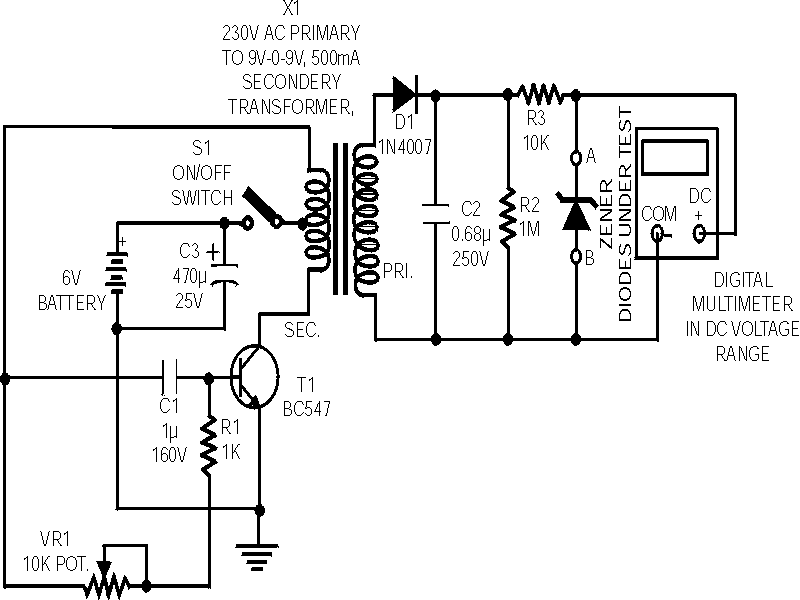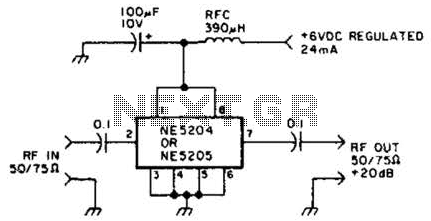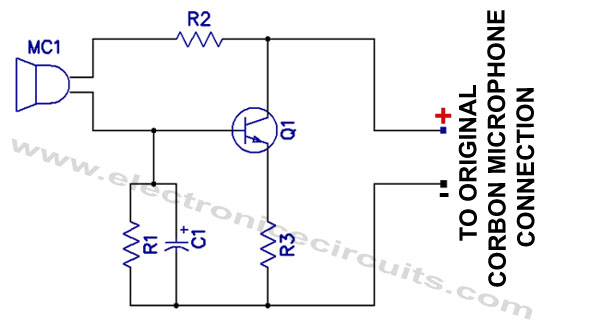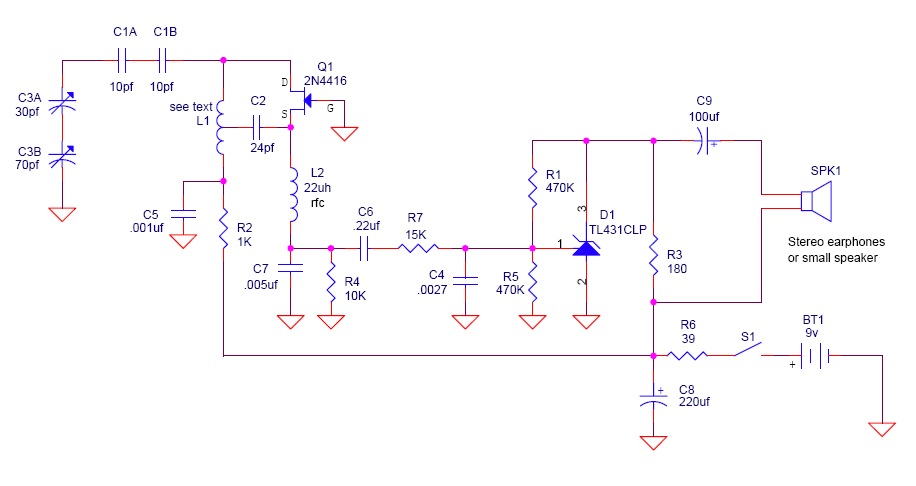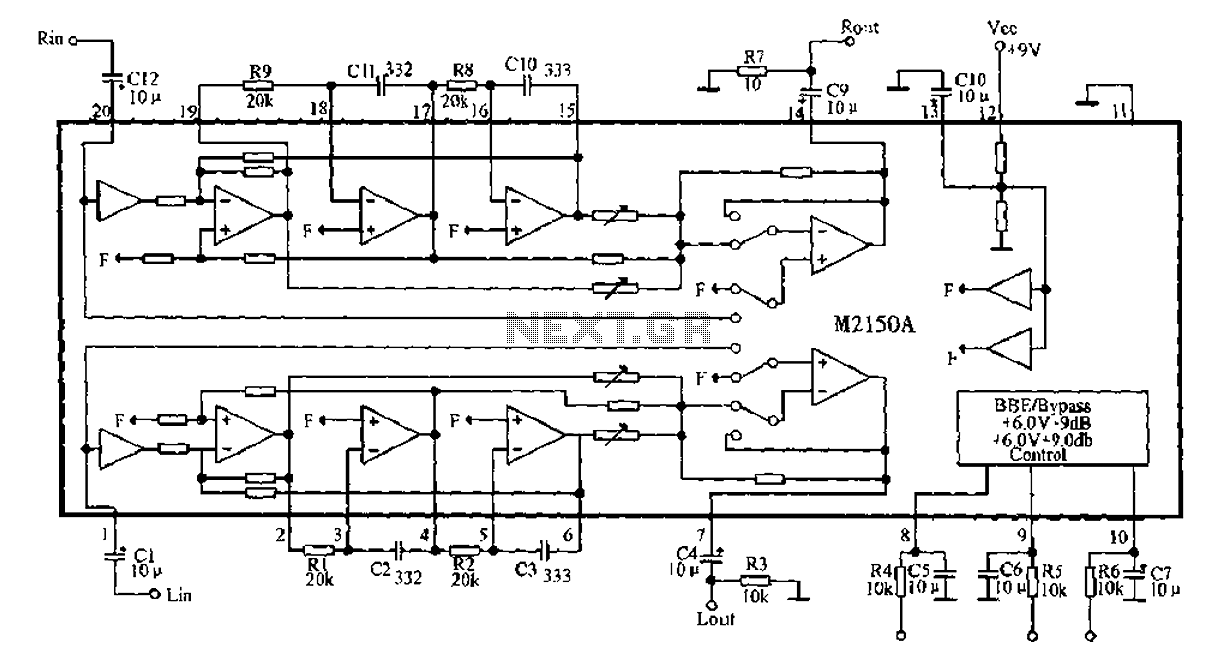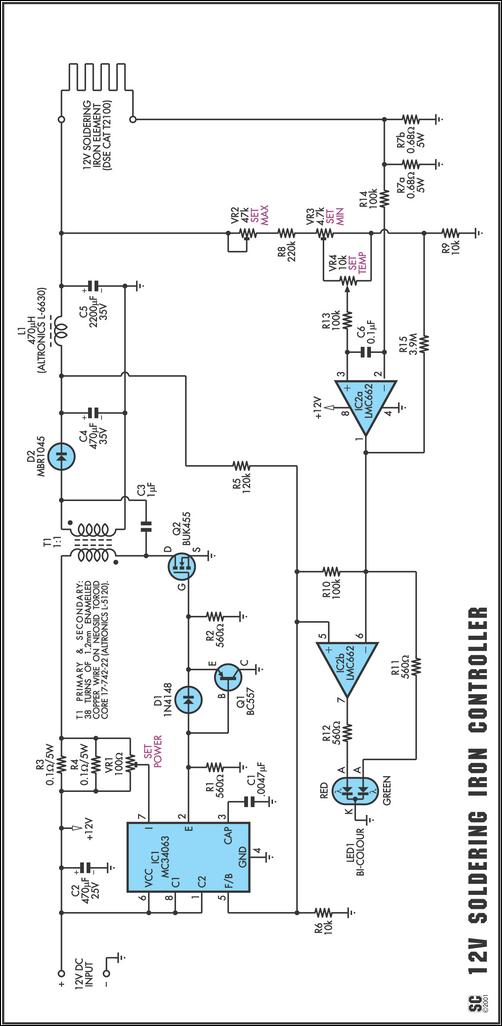
tda7088t fm radio receiver circuit
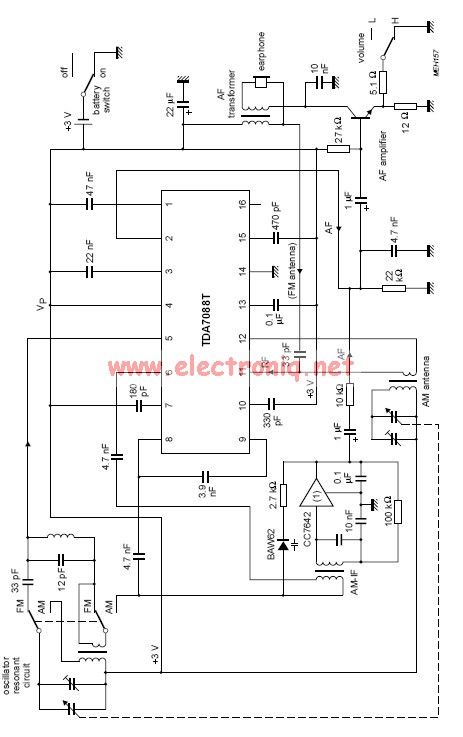
The TDA7088 features a frequency-locked-loop (FLL) system with an Intermediate Frequency (IF) of approximately 70 kHz. This circuit can be powered using a 3-volt battery cell or a regulated power supply.
The TDA7088 is a highly integrated FM radio receiver IC designed to operate efficiently in low-power applications. The frequency-locked-loop (FLL) system is key to its operation, enabling the demodulation of FM signals while maintaining stability and accuracy in frequency selection. The Intermediate Frequency (IF) of approximately 70 kHz is chosen to optimize the performance of the receiver, allowing for effective filtering and amplification of the received signals.
Powering the TDA7088 can be achieved with a single 3-volt battery cell, making it suitable for portable devices where battery life is critical. Alternatively, a regulated power supply can be utilized to provide a stable voltage, ensuring consistent performance and reliability in various applications. The choice of power source may depend on the intended use case, whether it be in handheld devices, automotive applications, or stationary setups.
The design of the surrounding circuitry should include appropriate decoupling capacitors close to the power supply pins of the TDA7088 to minimize noise and ensure stable operation. Additionally, careful consideration should be given to the layout of the PCB to reduce interference and optimize the performance of the FLL system. Antenna selection and placement will also significantly affect the reception quality, necessitating the use of a suitable antenna design for the desired frequency range.
In summary, the TDA7088 is an efficient solution for FM reception in low-power applications, with its frequency-locked-loop system and flexible power options making it versatile for various electronic projects. Proper circuit design and component selection will enhance its performance, enabling effective signal processing in diverse environments.TDA7088 contains a frequency-locked-loop (FLL) system with an Intermediate Frequency (IF) of about 70 kHz. For supplying this circuit we can use an 3 volts battery cell or a regulated power supply. 🔗 External reference
The TDA7088 is a highly integrated FM radio receiver IC designed to operate efficiently in low-power applications. The frequency-locked-loop (FLL) system is key to its operation, enabling the demodulation of FM signals while maintaining stability and accuracy in frequency selection. The Intermediate Frequency (IF) of approximately 70 kHz is chosen to optimize the performance of the receiver, allowing for effective filtering and amplification of the received signals.
Powering the TDA7088 can be achieved with a single 3-volt battery cell, making it suitable for portable devices where battery life is critical. Alternatively, a regulated power supply can be utilized to provide a stable voltage, ensuring consistent performance and reliability in various applications. The choice of power source may depend on the intended use case, whether it be in handheld devices, automotive applications, or stationary setups.
The design of the surrounding circuitry should include appropriate decoupling capacitors close to the power supply pins of the TDA7088 to minimize noise and ensure stable operation. Additionally, careful consideration should be given to the layout of the PCB to reduce interference and optimize the performance of the FLL system. Antenna selection and placement will also significantly affect the reception quality, necessitating the use of a suitable antenna design for the desired frequency range.
In summary, the TDA7088 is an efficient solution for FM reception in low-power applications, with its frequency-locked-loop system and flexible power options making it versatile for various electronic projects. Proper circuit design and component selection will enhance its performance, enabling effective signal processing in diverse environments.TDA7088 contains a frequency-locked-loop (FLL) system with an Intermediate Frequency (IF) of about 70 kHz. For supplying this circuit we can use an 3 volts battery cell or a regulated power supply. 🔗 External reference
